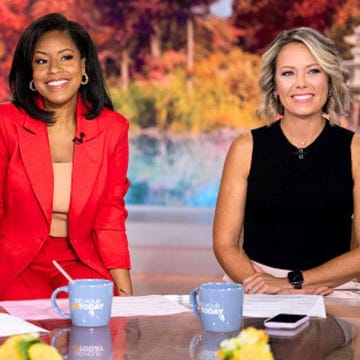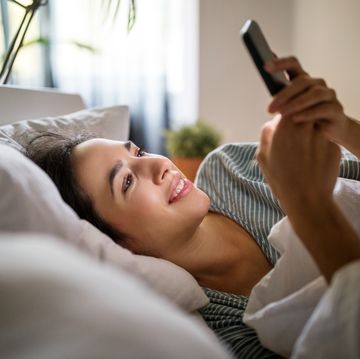Everywhere you turn, it seems like there’s an opportunity to put a dent in your wallet. Like clockwork, fashion brands promote new collections every season, there’s the temptation to try the latest food craze and just a few minutes on social media can lead to being inundated with product recommendations. Consumerism is alive and well. If you need more proof, Capital One Shopping reported that from January to November 2024, online shoppers in the U.S. spent a record average of $3.6 billion per day.
But what if you refuse to fall into the overconsumption trap, and instead embrace the "no buy challenge"? More and more people (social media influencers included) are promoting no- or low-buy years, which involves curbing spending on unnecessary items, be it beauty products, clothing or coffee mugs that you have in excess.
Why are so many people doing the "no buy challenge"?
For some, the motive may be to reach a specific savings goal and use up items they already own before buying anything new. Others are simply trying the "no buy challenge" to help reduce clutter in their homes.
Dr. Catherine Roster, a professor in the Department of Marketing, Information and Decision Sciences at the University of New Mexico, is currently studying consumers’ overconsumption habits and understands why this particular challenge has gained momentum of late. In a recent survey of 1,000 people in the U.S. between the ages of 25 and 45, Dr. Roster discovered that 55% of them (predominantly females) are either thinking about or actively engaged in the "no buy" or "low buy challenge." “People are viewing the challenge as a way to reduce their expenses in response to inflation,” Dr. Roster explains. “They're also thinking about their well-being and want to exercise more mindful consumption.”
Hannah Blass of @thestyleaudit falls into this camp. Ever since she was a teenager, Hannah struggled with overspending. Last year, she decided to try curb her spending by doing the "no buy challenge" for 90 days. “By the time I was 28, I realized that if I kept up that rate of shopping, it would start to put my bigger life goals — things like having a wedding and kids and buying a home — in jeopardy,” says Hannah, who previously worked in fashion marketing. “I went into the challenge with the intention of coming out on the other side with a changed habit and a changed relationship with shopping, my closet and consumerism.”
So, Hannah started shopping her own closet and finding creative ways to assemble outfits, using Pinterest to create outfit inspiration boards. While there were certainly challenging moments, she pushed through and discovered something special in the process. “I started to be a lot more grateful for what I already had, and realized that some of the reasons that I was shopping, like wanting to feel more confident in my personal style, were actually things I could get by not shopping,” Hannah explains.
How to pull off a successful "no buy" year:
- Know your why. Whether your goal is to save money or pay off debt once and for all, be clear about the reason for taking on the challenge. “You need that bigger motivation in mind, because that's going to be the thing to help you change,” Hannah says.
- Write down your goals. Pinpoint one or two areas of focus for the "no buy challenge" and document them to ensure there are no loopholes. It can be cutting down on ordering takeout, traveling, you name it. There's one caveat, though: “Write down if there any specific exceptions you're going to be making, too,” Hannah says. "Maybe you plan to buy a pair of shoes for an upcoming wedding, for instance.”
- Declutter your home. “Clear your space and get rid of all the things you're not using or items you regret buying,” Hannah says. “Getting your space to that place will keep you motivated once the no buy ends, because it will be a lot more clear and full of things you actually love.” You'll be less tempted to fall into the habit of overspending again.
- Have an accountability partner. Lean on your partner, family member or friends to help you meet your financial goals. “It should be someone in your life who supports you and you feel comfortable talking to about your shopping habits,” she says. “They should have your back and not shame you or make you feel bad for your past choices.” Hannah also found that sharing her experience on TikTok, jotting down her thoughts in a journal and blogging about it along the way helped her to stay on track.
- Avoid your triggers online.“Part of the process is learning how to cope with and consume advertisements and media without always feeling the need to shop,” Hannah says. There's no need to delete social media altogether, but she suggests unfollowing specific influencers and accounts that are triggering for you, making you feel less than or jealous.
Since completing the challenge, Hannah has launched a 13-week virtual course to help people take control of their spending habits. “There are 15 people in the current program, and we meet weekly on Zoom to discuss the sales and marketing tactics we get manipulated by, the emotional withdrawal of quitting shopping and how to make better purchases going forward,” she says. Her website, thestyleaudit.com, also features additional resources on the topic, including a budget template and a complimentary list of book, podcast and movie recommendations.
Not ready to commit to the "no buy challenge"? You can try a "low buy year," where you decrease spending in certain areas. “I don't think you ever really escape it (overconsumption), but we have to get better at understanding our triggers and tuning them out now that we have a lot more control over our devices,” Dr. Roster says.
Monique Valeris is the home design director for Good Housekeeping, where she oversees the brand's home decorating coverage across print and digital. Prior to joining GH in 2020, she was the digital editor at Elle Decor. In her current role, she explores everything from design trends and home tours to lifestyle product recommendations, including writing her monthly column, "What's in My Cart."













